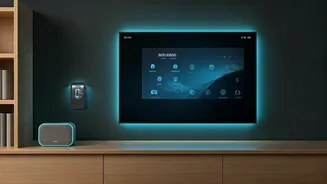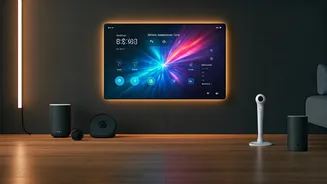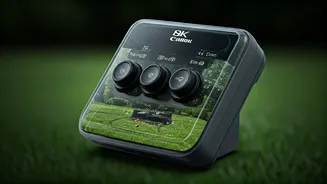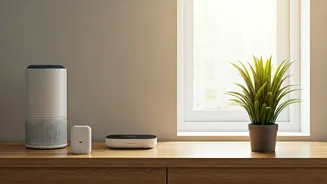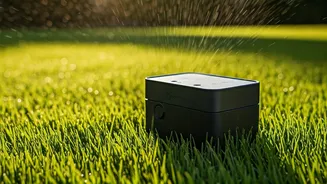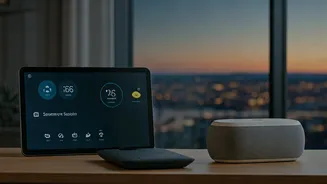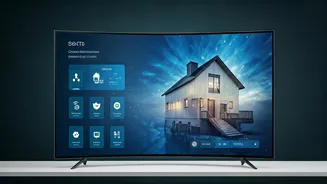Smart Shades & Blinds
Smart shades and blinds represent a significant advancement in home automation, merging convenience with energy efficiency. Unlike traditional window coverings,
smart shades can be controlled remotely via smartphones, voice commands, or automated schedules. This means you can adjust them without physically touching them, whether you're at home or away. Beyond convenience, smart shades contribute to energy savings by allowing you to regulate sunlight and heat gain, reducing the reliance on air conditioning during hot periods and preserving warmth during colder months. They are available in various styles and materials to match your home's aesthetic, making them a stylish and practical addition to any smart home setup. Installation is often straightforward, and integration with other smart home systems is seamless, allowing for interconnected control and automation. The ability to set specific schedules for opening and closing, integrating with weather conditions, or responding to light sensors, makes them a versatile and efficient solution for modern living. This level of customization allows you to create optimal living conditions while conserving energy.
Smart Sprinkler Systems
Smart sprinkler controllers offer a significant upgrade to traditional irrigation systems by integrating smart technology for efficient water usage and plant care. These systems connect to your home's Wi-Fi network and can be controlled and monitored via a mobile app. Key features include the ability to create customized watering schedules, adjust watering based on weather forecasts, and detect leaks to prevent water waste. Smart sprinkler controllers often incorporate features like soil moisture sensors that measure the level of moisture in your soil to determine the exact amount of water your lawn and garden need. Some models are also compatible with smart home ecosystems like Amazon Alexa and Google Assistant, allowing voice control. Installing a smart sprinkler system can reduce water bills, promote healthier plants by providing optimal watering, and save time by automating the irrigation process. Furthermore, many models come with detailed reports on water usage, offering insights that can help you improve your water management habits. This integration ensures that your irrigation aligns with environmental needs, helping conserve water and promoting sustainable practices.
Home Security Systems
Home security systems are a vital component of a smart home, providing enhanced safety and peace of mind. These systems typically comprise various components, including door and window sensors, motion detectors, security cameras, and a central control panel. The systems can be monitored by professional security companies or managed by the homeowners themselves through a mobile app. Modern home security systems allow remote access, allowing you to arm and disarm the system, view live camera feeds, and receive real-time alerts about any suspicious activities. Many systems incorporate advanced features like smart locks that enable keyless entry and exit, and environmental sensors that detect fire, smoke, and carbon monoxide. Installation can range from DIY setups to professional installations, offering different levels of convenience and customization. Integrating the security system with other smart home devices, such as smart lights and smart thermostats, can automate responses to security events, such as turning on lights during a break-in or adjusting the thermostat to the ideal temperature. These integrated systems ensure comprehensive protection and contribute to a safer, more secure home environment.
Air Quality Monitors
Smart air quality monitors provide valuable insights into your home's indoor air quality, enabling you to maintain a healthy living environment. These devices track various pollutants, including particulate matter (PM2.5 and PM10), volatile organic compounds (VOCs), carbon dioxide (CO2), temperature, and humidity. They collect real-time data and often provide a user-friendly interface to display current conditions and trends. Many air quality monitors include mobile apps that send alerts when air quality levels exceed predefined thresholds, guiding you to take appropriate actions. This may include opening windows, using an air purifier, or identifying the source of pollutants. Some models integrate with smart home ecosystems, allowing them to control air purifiers and other devices automatically. The ability to monitor air quality helps to alleviate allergies, asthma, and other respiratory conditions. By keeping track of the air quality, you can take timely action to create a healthier home. Investing in a smart air quality monitor is an important step towards improving the overall health of your home and protecting the well-being of its occupants.
Smart Home Assistants
Smart assistants, such as Amazon's Alexa and Google Assistant, are at the core of smart home integration, allowing you to control devices through voice commands and create automated routines. These devices act as a central hub, connecting and managing various smart home products, including lights, thermostats, speakers, and appliances. Through voice control, you can perform multiple tasks such as playing music, setting alarms, getting weather updates, and controlling smart home devices. Smart assistants also support home automation features, like setting up routines that activate multiple devices with a single command. For example, you can create a 'Good Night' routine that turns off the lights, locks the doors, and adjusts the thermostat. They provide convenience, improve energy efficiency, and improve home security. The development of smart assistants continues to advance, including new features like advanced voice recognition, better integration with third-party devices, and a focus on privacy. This ongoing evolution makes smart assistants an even more essential and useful component of any smart home.
